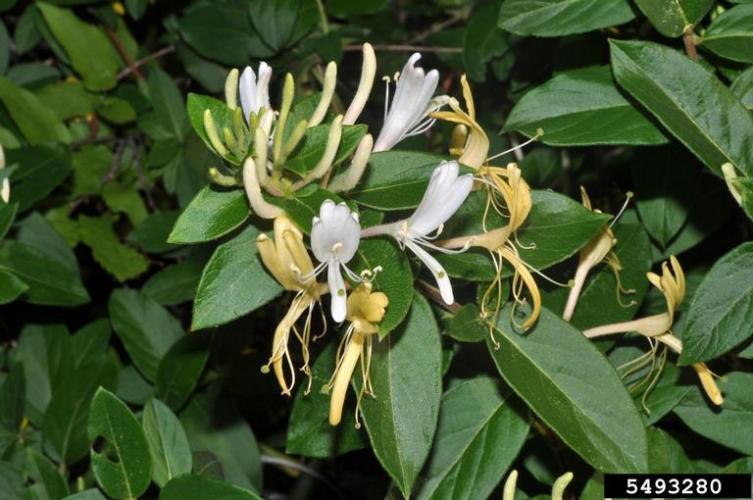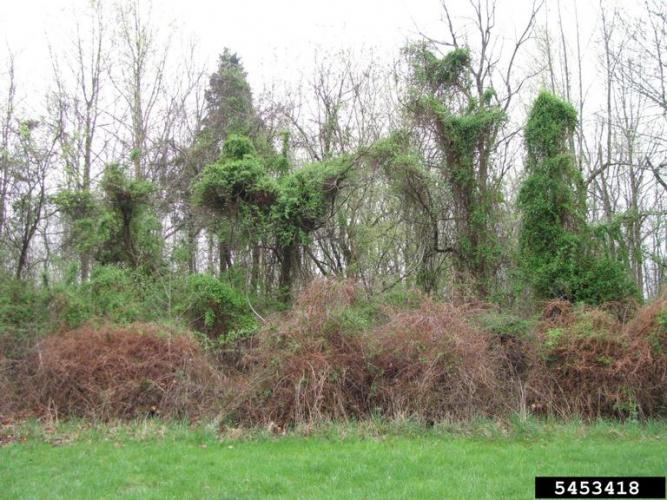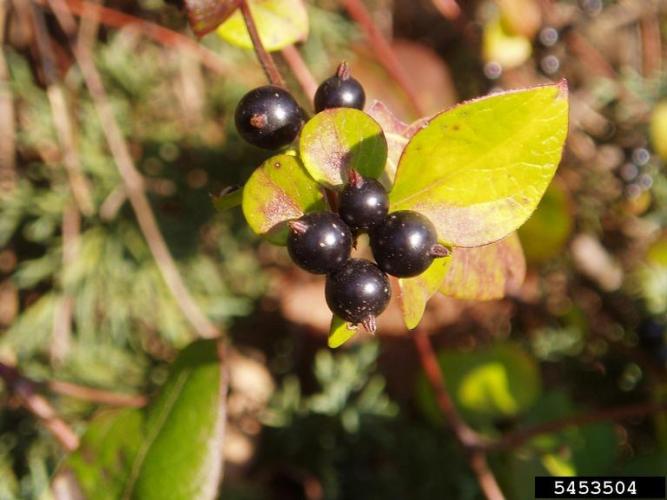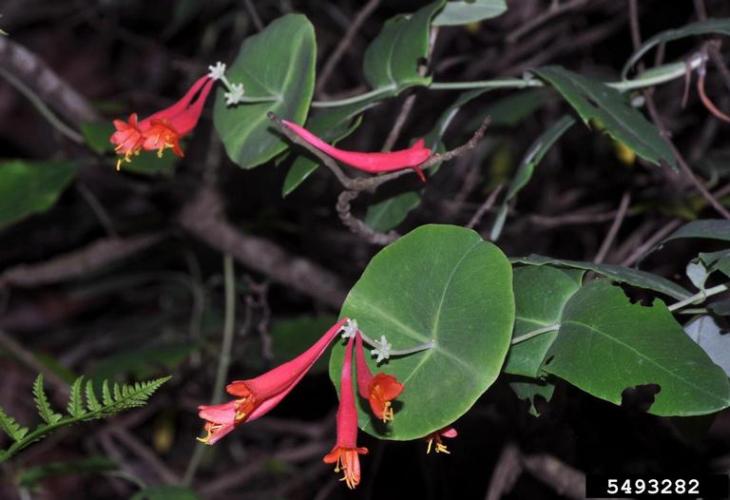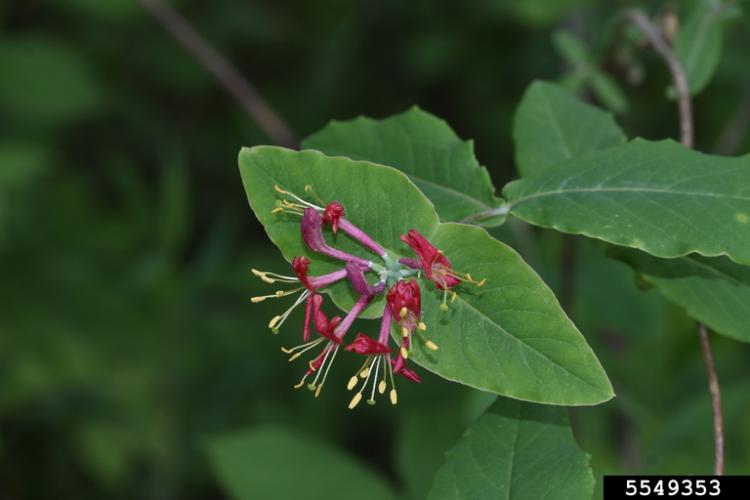Honeysuckle, Vine
Identification
Appearance
Lonicera japonica is a woody perennial, evergreen to semi-evergreen vine that can be found either trailing or climbing to over 80 feet in length. Young stems may be pubescent while older stems are glabrous.
Foliage
Leaves are opposite, pubescent, oval and 1-2.5 inches long. Margins are usually entire but young leaves may be lobed or toothed.
Flowers
Flowering occurs from April to July, when showy, fragrant, tubular, whitish-pink flowers develop in the axils of the leaves. The flowers turn cream-yellow as they age.
Fruit
The small shiny globular fruits turn from green to black as they ripen. Each fruit contains 2-3 small brown to black ovate seeds.
Biology
This species is Quarantined: Class B Noxious Weed
Origin
Native to Japan and Korea
Habitat
It thrives in a wide variety of habitats including fields, forests, wetlands, barrens, and all types of disturbed lands. Occurs as dense infestations in forest margins, right-of-ways, and forest canopies. It is shade tolerant.
Life cycle
Japanese honeysuckle is a deciduous woody vine in cold climates. It can be seen flowering from June to August. Small black berries are produced containing 2-3 seeds. Spread occurs by rooting at vine nodes and animal dispersal of the seeds.
Ecological Threat
It spreads and out-competes native plant species. Its evergreen to semi-evergreen nature gives it an added advantage over native species in many areas. Shrubs and young trees can be killed by girdling when vines twist tightly around stems and trunks, cutting off the flow of water through the plant. Dense growths of honeysuckle covering vegetation can gradually kill plants by blocking sunlight from reaching their leaves. Vigorous root competition helps it spread and displace neighboring native vegetation.
Vermont Distribution
Citations
Photo Credit
5453418, 5453504, Leslie J. Mehrhoff, University of Connecticut, Bugwood.org
5493280, William M. Ciesla, Forest Health Management International, Bugwood.org
5549353, Rob Routledge, Sault College, Bugwood.org
5493282, William M. Ciesla, Forest Health Management International, Bugwood.org
